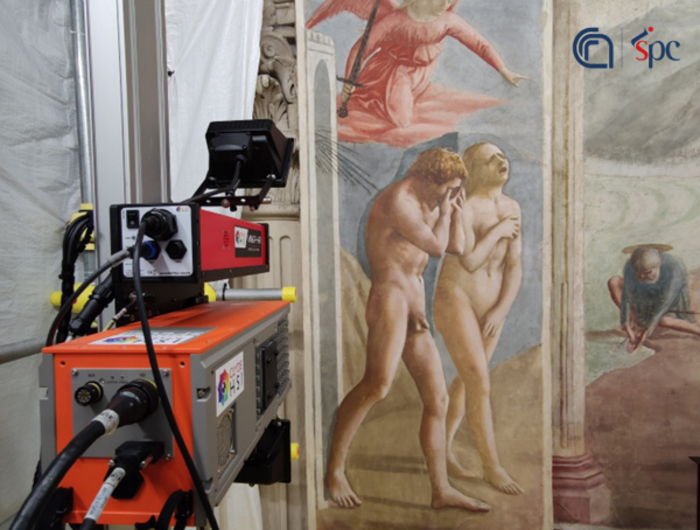During a study campaign supported by the U.S.-based Friends of Florence and the Jay Pritzker Foundation, mysterious “ghost drawings” have emerged in the pictorial cycle of the Stories of Genesis, created between 1424 and 1428 by Masolino Da Panicale and Masaccio and completed between 1481-1485 by Filippo Lippi in the Brancacci Chapel in Florence. The fresco, considered one of the masterpieces of the Italian Renaissance, concealed details such as fig leaves covering the nudity of Adam and Eve who are escaping from the Garden of Eden, lush vegetation, and golden rays–all now invisible to the naked eye.
These hidden elements have been identified through modern noninvasive diagnostic techniques. According to the National Research Council (CNR), the largest public research organization in Italy, these are not additions due to the 1642 censorship, later removed in the 1980s during restoration.
“The results were obtained through the use of macro-XRF, which makes it possible to create maps of chemical elements on large pictorial surfaces,” explains Cristiano Riminesi of CNR-Ispc. “For example, arsenic was detected in orpiment yellow, a dry-applied pigment sometimes mixed with indigo or ultramarine blue to obtain green on black charcoal-based backgrounds. This technique was already known to masters such as Beato Angelico and Taddeo Gaddi.”
The same pigment was used by Masaccio to depict the rays coming from the gate of heaven on earth. Researchers now plan to investigate why these details are no longer visible to the naked eye and whether the cause lies in the chemical composition of the materials used.












